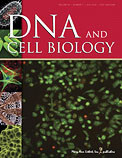Hromadnikova I, Zejskova L, Kotlabova K, Jancuskova T, Doucha J, Dlouha K, Krofta L, Jirasek JE, Vlk R. DNA Cell Biol. 2010 Jun;29(6):295–301. IF: 2.280

Abstract:
This study evaluated quantification of fetal extracellular DNA in maternal plasma for differentiation between cases at risk of onset of placental-insufficiency-related complications and normal pregnancies. Using real-time polymerase chain reaction, fetal (sex-determining regio Y [SRY] and hypermethylated RASSF1A sequence) and total (beta-globin [GLO] gene) extracellular DNA was examined in 70 normal pregnancies, 18 at risk of placental-insufficiency-related pregnancy complications, 24 preeclampsia with or without (w or w/o) intrauterine growth retardation (IUGR) (median 34.0 week), and 11 IUGR (median 28.5 week). IUGR was diagnosed when estimated fetal weight was below the 10th percentile for evaluated gestational age. Although increased levels of extracellular DNA were detected in pregnancies with preeclampsia w or w/o IUGR relative to controls (RASSF1A, p < 0.001; SRY, p = 0.009; GLO, p < 0.001), quantities of fetal extracellular DNA in IUGR were not statistically significant (RASSF1A, p = 0.21; SRY, p = 0.2). RASSF1A, SRY, and GLO achieved 93.1%, 93.6%, and 92.1% accuracy for differentiation between normal pregnancy and preeclampsia w or w/o IUGR. Lower sensitivity was observed for pregnancies with onset of IUGR (RASSF1A, 60.0%; SRY, 80.0%; GLO, 72.7%), but did not influence final accuracy (RASSF1A, 91.6%; SRY, 92.5%; GLO, 89.5%). Among 18 patients at risk, 8 pregnancies involving 3 female and 5 male fetuses developed preeclampsia (n = 4), IUGR (n = 3), and chronic placentopathy causing hypoxia (n = 1). Elevation of extracellular DNA was demonstrated in 3/5 (SRY), 1/8 (hypermethylated RASSF1A), and 4/8 (GLO) patients at the earliest 26 weeks and at the latest 2 weeks before the onset of symptoms. These data indicate that fetal and total extracellular DNA concentrations can be significantly elevated in plasma of patients who later developed placental-insufficiency-related pregnancy complications. However, this is strongly individualized, and not a rule for all cases, and probably depends on the actual occurrence of excessive placental trophoblast apoptosis.
-mk-
